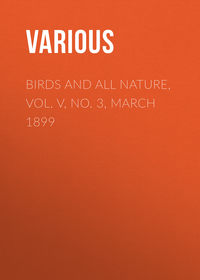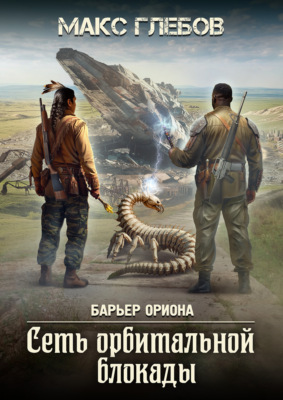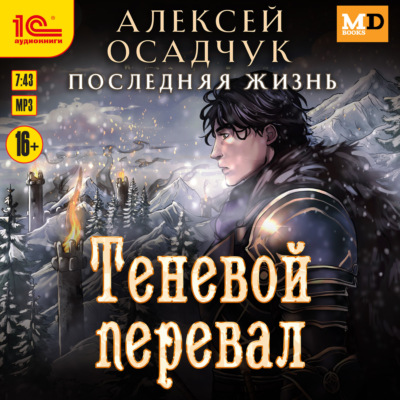Kitobni o'qish: «Birds and All Nature, Vol. V, No. 3, March 1899», sahifa 5
A black cat of the household was a recipient of his practical jokes. When she was passing Jip found it exceedingly amusing to spring upon her back, give her a sharp dig with his beak, and then spring nimbly to a low branch, exulting over the cat's vain effort to locate her tormentor.
A favorite joke of a mockingbird in Richmond, Va., was, when espying a dog, to utter a shrill whistle in exact imitation of a man summoning that animal. Thus peremptorily called, the canine would suddenly halt, prick up his ears, look up and down the street, then, seeing no master, trot on his way. Again the bird would whistle, but in a more mandatory tone than before. The dog would stop, gaze about in a puzzled manner, then, in response to another whistle, dash forward in the direction of the sound. The mystification of the dog appeared to afford the mockingbird the most delight, more particularly when not only one dog, but several would collect under his cage, whining and barking, vainly seeking to locate their masters.
Among the mammals, the elephant, in general estimation, possesses the drollest sense of humor. The writer never will forget the mischievous pranks of a huge fellow among a herd of elephants tethered in a pen in Central Park, New York. Only those beyond his reach escaped his teasing, his sinuous trunk tickling those near, now here, now there, his little pig-like eyes twinkling with genuine humor. His companions did not respond in kind, not feeling perhaps in a playful mood, which fact seemed in no way to diminish the big fellow's amusement, for he continued the sport at intervals much to the edification of the spectators.
Even when engaged in piling up huge slabs of lumber in the sawmills in India, these huge animals while away the tedious hours of labor by many a little prank or joke at the expense of their drivers. A favorite one is, after disposing of one load and returning for another, to fill their trunks with odds and ends as they move leisurely along, a stray nail, three or four pebbles, a tuft of grass with a bit of earth still clinging to its roots, a discarded cheroot, or other small articles which may lie in their paths. These are collected, and when the trunk is packed to their satisfaction, quietly curled upward and the mass blown against the naked stomachs of the drivers dozing upon their backs.
TAMING THE SMALLER WILD ANIMALS
ALDA M. MILLS
THERE is a great difference in the dispositions of the small wild animals, some quickly responding to care and petting, while others seem incapable of being tamed. It is the same with birds. I have found owls, hawks, and other species very easily tamed, while prairie chickens and quail appear to be incapable of domestication even in a small degree. They will lose considerable fear of human beings if left in their freedom to become accustomed to their near approach, but if placed in captivity they pine away and die, or, finding some avenue of escape, wander away and are lost. The nearest approach to domestication in the prairie chicken tribe I ever noted, was that of a young bird that grew up with a flock of young turkeys. We noticed it among the turkeys when they were quite small. The prairie chicken must have been considerably older than the turkeys, as at first it was larger than they were, but they rapidly gained on it and were soon much the largest. However, the little wildling clung to its adopted family and in the fall, when the turkeys came and roosted in the plum trees near the buildings, it came too and after a time lost most of its shyness and, strangest of all, adopted the turkeys' mode of roosting in the trees. Later on, however, it disappeared, probably joining a flock of its own kind.
The common striped ground-squirrel is very easily tamed if taken while young and will soon learn to come if called by name, and will learn many little tricks. The gray squirrels, though much prettier than the striped ones, are naturally shyer and harder to tame. Rabbits of the several species inhabiting the United States are capable of domestication in a degree, though of all I ever owned but one would return at my call when allowed its liberty out-of-doors. Western jack-rabbits when young make most interesting and beautiful pets, and, while confined, seem to lose all fear. Notwithstanding their prettiness and their soft cuddling ways, they are stupid little things, all their knowledge seeming to come through the calls of their appetites.
Minks and weasels have too fierce a nature to accept domestication, and, so far as I have observed, show not the slightest degree of affection for the one who feeds them. That odorous animal, the skunk, however, is very susceptible to kindness, and will become as tame and tractable as a pet dog. One of the most interesting pets I ever had was a skunk taken when very young. It was allowed its full freedom and would follow me around, come at my call, do many little tricks at command, and was as playful as a kitten. Being thoroughly tamed it did not make use of its objectionable means of offense and defense, though when frightened it often "threatened" to. As in the case of the prairie chicken, my pet skunk also disappeared when it was nearly grown, thinking, perhaps, that it could make a better living for itself than I could furnish it. Its favorite food was insects such as May-beetles and their larvæ, grass-hoppers, and almost every kind of bug, worm, or beetle; even hairy caterpillars were devoured after being rolled or moulded with its paws to rub off most of the hairs. This little pet of mine was never troubled with dyspepsia or indigestion and crammed its capacious stomach with a vast amount of food – mostly insects – though small mammals, eggs, birds, and once a young chicken were devoured with relish. Mice of many species can be tamed to some extent though I have found one of the shyest species when in a wild state to be the most readily and thoroughly tamable. I refer to the deer mice. They are pretty, yellowish brown creatures, white underneath, and have large, dark, brilliant eyes and erect ears giving them a very handsome expression. Their hind legs are much longer and stronger than those of the ordinary mouse and they are capable of making extraordinary leaps like the animals from which they get their common name.
When tamed they will learn little easy tricks such as sitting erect and "begging" for food, coming when called by name, etc., and are not so ready to use their teeth on the slightest provocation, as are their cousins, the blue field mice.
By making pets of wild animals much can be learned of their habits, dispositions, and characteristics. Especially their food habits, which, in the wild state, exert so much influence in the economy of nature as checks to the undue increase of other species of animals, insects, or plants.
THE WOODCHUCK
VERY similar in its bodily structure to the marmot, of which it is said to be the nearest American relative, is the woodchuck or ground-hog (Arctomys monax). It is about eighteen inches in length, including the tail. The body is stout, the head broad and flat, the legs short and thick, the fur blackish or grizzled on the upper portion and of a chestnut red on the under surface of the body.
The ground-hog is found in all parts of the region extending from the Atlantic coast west to the Missouri, Iowa, and Minnesota. It inhabits woods, prairies, and meadows, lives on roots, vegetables, and herbs, and is especially fond of red clover. Its burrows are large excavations, and in the early autumn it busies itself in storing provisions for its long winter retreat. It is said to be one of the first hibernating animals to retire to winter quarters and one of the earliest to come forth in the spring, the length of its retirement varying with the locality, and being shorter in the south than in the north. In the northern United States it usually retires about the first of October and reappears about the middle of March. A recent writer and close observer says that woodchucks hibernate in pairs, but he never knew one of these proverbially sleepy creatures to leave its hole until warm weather came – in spite of the alleged practice it has of coming out invariably on the second day of February to fix the weather for the rest of the winter. He took the trouble once to dig into a woodchuck's burrow on a Candlemas day – and a warm, cloudy day it was; just such a day as the ground-hog is said to choose to come out of his hole and stay out. He found two woodchucks in the burrow, with no more sign of life about them than if they had been shot. From all outward appearances he could have taken them out and had a game of football with them without their knowing it. When the animal begins its hibernation it carefully closes the entrance to its burrow. Dr. Bachmann, who had marked a burrow to which he knew a pair of woodchucks had retired, caused it to be opened early in November, and found the two animals, perfectly dormant, lying coiled up close together in a nest of dry grass, twenty-five feet from the entrance.
The young woodchucks, of which there are from four to six in a litter, are born about the end of April. The mother takes tender care of them until they are able to shift for themselves.
The woodchuck, when taken young, is easily tamed, and becomes an interesting pet. The little animal can be taught to come when called, to run for food when whistled to, and to answer to a name. One called Chuck was very fond of bread spread with butter and sugar. If plain bread were offered to him he would taste it, make a wry face, spit out the bit in his mouth, and throw away the piece he held, and then he would straighten himself up and hold out his shining black hands for bread with sugar on it. He always sat up stiffly on his hind legs when eating, and it was a comical sight to see him holding a long banana in his arms, until he had eaten the whole of it, blinking his bright black eyes with satisfaction. Chuck was taught many tricks, to balance a stick on his nose, swing in a trapeze, draw a toy cart, and the like. He was very affectionate and tractable.
Early in September Chuck began to eat voraciously and soon became very fat, but in the first week in October his appetite failed; he ate at first once a day, then once in two days, and after awhile he became quite restless and stupid. He was given his liberty, and watched closely to learn his habits. He began gnawing grass, gathering dry leaves and tucking them in various corners. At length he found a place that suited him to dig, and then he began making his nest. When the excavation was complete Chuck disappeared for several days. One evening he tapped on the kitchen door. When the door was opened he ran to a basket of apples and ate one, then ate a slice of bread and sugar. He appeared crazy with haste, and as soon as he was through eating he scampered off, to be gone a long time. On the first day of February Chuck crept out of his hole, and sat for a moment in the sun. Before he could be reached, however, he had returned to it. In six weeks and three days he again came out, and what was surprising, he did not appear to have forgotten any of his friends, of whom he had many among the cats, dogs, and rabbits of the neighborhood, trotting about among them on his hind legs. A cruel boy and a savage dog ended the life of this harmless little animal.
C. C. M.
FLOWERS WITH HORNS AND CLAWS
E. F. MOSBY
THE milkweed is best known to most of us by its pods – long, rough cases, packed close with shining white silk attached to little brown seeds. The lightest wind that blows can carry these a stage or two on their journey with such lovely silken sails. But perhaps everyone has not noticed one rather strange thing about them. Almost always there are two pods, one vigorous of growth, large and full; the other stunted and ill-formed. They are like the two brothers or sisters of Fairy Tales, one fair and well-favored and gracious, the other ill-grown and dwarfish. But why this is so, is one of the many secrets of the milkweed.
It is quite a large family of flowers, or weeds, as you may choose to call them. There is the gorgeous orange-colored butterfly weed, always surrounded by hovering or fluttering butterflies, most of them also orange or yellow in their coloring; the fragrant, rose-colored milkweed of June, the purple milkweed and its cousin of the marsh. But it is the common milkweed that is called the horned herb. It was once thought possessed of many healing virtues when the business of gathering and drying herbs was more important than it is now. Yet one needs no idea of this kind to look with interest on this curiously formed plant which grows in such profusion by the dusty roadside or by our very doorstep. A milky juice exudes from the stem whenever a flower is gathered, and the pollen is in such sticky masses that a feeble insect is often caught and cannot escape with its fatal treasure.
The blossom cluster, reflexed so oddly, is pretty and quaint at first sight, but as we look deeper we find some unknown law of fives has ruled its structure – the recurved calyx is five-parted, so too the deeply recurved corolla; five stamens there are surrounding, like a circle of courtiers, a fairy king and queen, the two pistils in the center, above which hangs "a large five-angled disk," an awning of state. But oddest of all is the crown of five-hooded nectaries above the corolla, each nectary enclosing an incurved horn. Is not this a strange honey-cup with the horn concealed under the silky flower-hood? The insects love the banquet thus spread for their delight and no doubt they know the secrets of the blossom.
There is another family of wild flowers that abounds in horns and claws, especially the latter – the large crowfoot family. The hook-beaked crowfoot has little one-seeded fruits with long and hooked beaks, like those of birds of prey, collected into a head. The wild columbine, nodding so merrily from the high rocks, and the larkspur, have hooked spurs and claws and the larkspur hides its long spurs in its calyx. But the monk's-hood is the more interesting of all.
In early days, before stamens and pistils are ready for open air and wandering insects or pattering showers, you may find a dark blue bud in the meadow. The calyx is large and showy and blue like a flower, and its curved front sepals close the entrance before while the hindmost sepal, like a soldier's helmet, or a monk's hood, comes down over all as a covering. Then the sun shines and the blossom ripens and it is time to open.
Wide fly the little doors, back falls the blue hood, and the golden heart of stamens and pistils is ready with a welcome. But where are the petals? Hidden under the hood are two tiny hammer-like claws, the only petals this flower possesses.




















